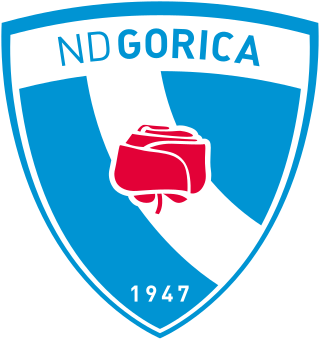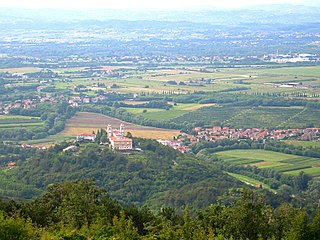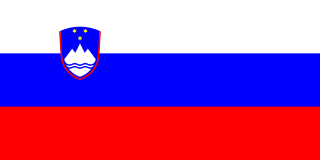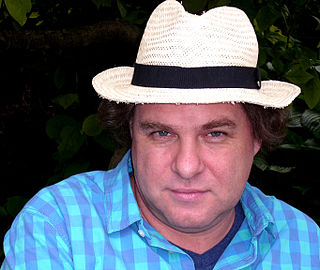
Garry Kimovich Kasparov is a Russian chess grandmaster, former World Chess Champion (1985–2000), political activist and writer. His peak FIDE chess rating of 2851, achieved in 1999, was the highest recorded until being surpassed by Magnus Carlsen in 2013. From 1984 until his retirement from regular competitive chess in 2005, Kasparov was ranked world no. 1 for a record 255 months overall. Kasparov also holds records for the most consecutive professional tournament victories (15) and Chess Oscars (11).

Maribor is the second-largest city in Slovenia and the largest city of the traditional region of Lower Styria. It is the seat of the Urban Municipality of Maribor and the Drava statistical region. Maribor is also the economic, administrative, educational, and cultural centre of eastern Slovenia.

The Slovenes, also known as Slovenians, are a South Slavic ethnic group native to Slovenia, and adjacent regions in Italy, Austria and Hungary. Slovenes share a common ancestry, culture, history and speak Slovene as their native language. According to ethnic classification based on language, they are closely related to other South Slavic ethnic groups, as well as more distantly to West Slavs.

Gorizia, colloquially stara Gorica 'old Gorizia' to distinguish it from Nova Gorica, is a town and comune (municipality) in northeastern Italy, in the autonomous region of Friuli-Venezia Giulia. It is located at the foot of the Julian Alps, bordering Slovenia. It is the capital of the Regional decentralization entity of Gorizia and is a local center of tourism, industry, and commerce. Since 1947, a twin town of Nova Gorica has developed on the other side of the modern-day Italy–Slovenia border. The region was subject to territorial dispute between Italy and Yugoslavia after World War II: after the new boundaries were established in 1947 and the old town was left to Italy, Nova Gorica was built on the Yugoslav side. The two towns constitute a conurbation, which also includes the Slovenian municipality of Šempeter-Vrtojba. Since May 2011, these three towns have been joined in a common trans-border metropolitan zone, administered by a joint administration board.

Nova Gorica is a town in western Slovenia, on the border with Italy. It is the seat of the Municipality of Nova Gorica. Nova Gorica is a planned town, built according to the principles of modernist architecture after 1947, when the Paris Peace Treaty established a new border between Yugoslavia and Italy, leaving nearby Gorizia outside the borders of Yugoslavia and thus cutting off the Soča Valley, the Vipava Valley, the Gorizia Hills and the northwestern Karst Plateau from their traditional regional urban centre. It is the European Capital of Culture in 2025. Since 1948, Nova Gorica has replaced Gorizia as the principal urban center of the Gorizia region, as the northern part of the Slovenian Littoral has been traditionally called. since May 2011, Nova Gorica has been joined with Gorizia and Šempeter-Vrtojba in a common trans-border metropolitan zone, administered by a joint administration board.

Nogometno društvo Gorica, commonly referred to as ND Gorica or simply Gorica, is a Slovenian football club based in Nova Gorica that competes in the Slovenian Second League, the second tier of Slovenian football. They are one of the most successful Slovenian clubs with four Slovenian PrvaLiga and three Slovenian Cup titles. The club plays its home matches at the Nova Gorica Sports Park, which has a capacity of 3,100 seats.

Goriška is a historical region in western Slovenia on the border with Italy. It comprises the northern part of the wider traditional region of the Slovenian Littoral (Primorska). The name Goriška is an adjective referring to the city of Gorizia, its historical and cultural centre.

The Slovene Littoral, or simply Littoral, is one of the traditional regions of Slovenia. The littoral in its name – for a coastal-adjacent area – recalls the former Austrian Littoral, the Habsburg possessions on the upper Adriatic coast, of which the Slovene Littoral was part. Today, the Littoral is often associated with the Slovenian ethnic territory that, in the first half of the 20th century, found itself in Italy to the west of the Rapallo Border, which separated a quarter of Slovenes from the rest of the nation, and was strongly influenced by Italian fascism.

The Slovenian PrvaLiga, currently named Prva liga Telemach due to sponsorship reasons, also known by the abbreviation 1. SNL, is the top level of the Slovenian football league system. Contested by ten clubs, it operates on a system of promotion and relegation with the Slovenian Second League. Seasons typically run from July to May with each team playing 36 matches.

Slovenia first participated as an independent nation at the Olympic Games at the 1992 Winter Olympics in Albertville, France, and the country has sent athletes to compete at every Games since then. The Slovenian Olympic Committee was established in 1991 and was recognised by the International Olympic Committee on 5 February 1992.

Bohinjska Bistrica is the largest settlement and administrative centre of the Municipality of Bohinj, in the Upper Carniola region of northwestern Slovenia.

Solkan is a settlement in the Municipality of Nova Gorica in the Gorizia region of western Slovenia, at the border with Italy. Although it forms a single urban area with the city of Nova Gorica today, it has maintained the status of a separate urban settlement due to its history and the strong local identity of its residents.

Dean Komel is a Slovenian philosopher.
Primorske novice is a regional daily newspaper published in Koper, Slovenia.

Transalpina Square "; Slovene: Trg Evrope, meaning "Europe Square"), is a square divided between the towns of Gorizia, northeastern Italy, and Nova Gorica, southwestern Slovenia. The railway station of Nova Gorica is located at the eastern end of the square, on the Slovenian side.
Nova revija is a Slovene language literary magazine published in Slovenia.

Nogometni klub Brda Dobrovo, commonly referred to as NK Brda or simply Brda, is a Slovenian football club based in Dobrovo that competes in the Littoral League, the fourth highest league in Slovenia. The club was founded in 1973.

Amedej Vetrih is a Slovenian retired footballer who played as a midfielder.
The 2016–17 Slovenian Third League began on 20 August 2016 and ended on 28 May 2017.
The 2018–19 Slovenian PrvaLiga was the 28th edition of the Slovenian PrvaLiga since its establishment in 1991. The season began on 20 July 2018 and ended on 25 May 2019.